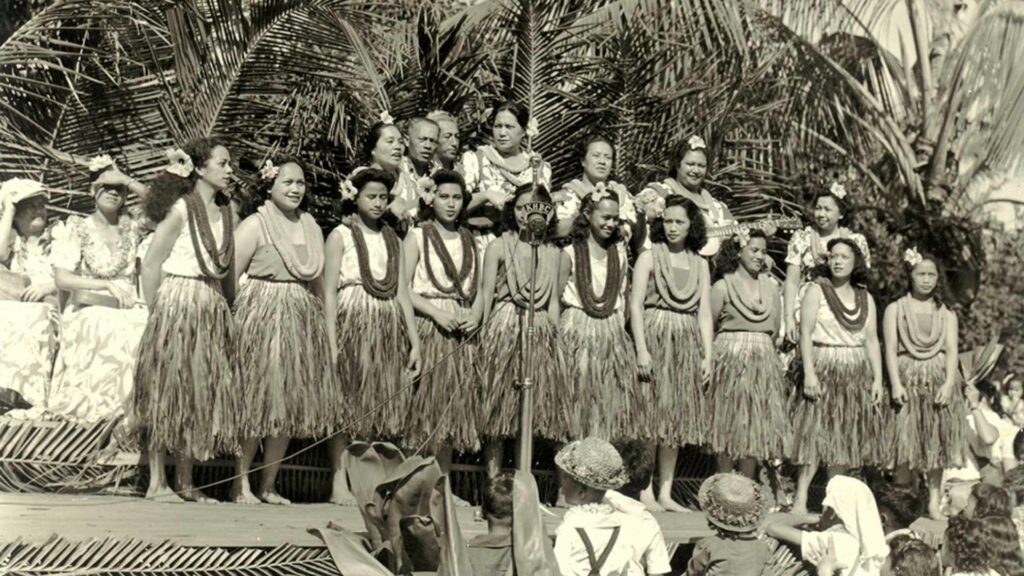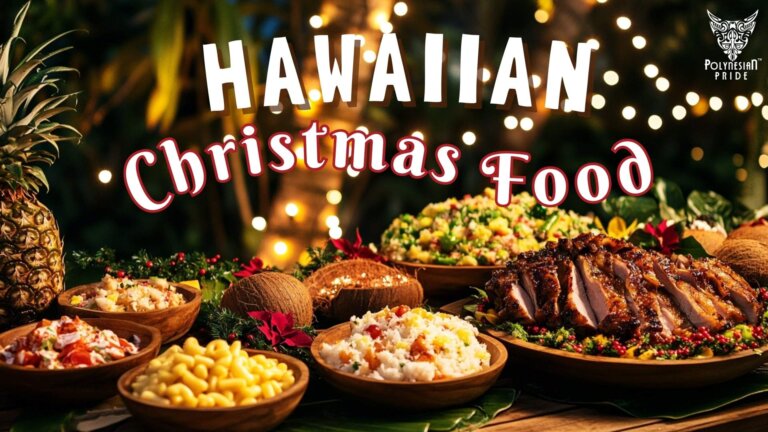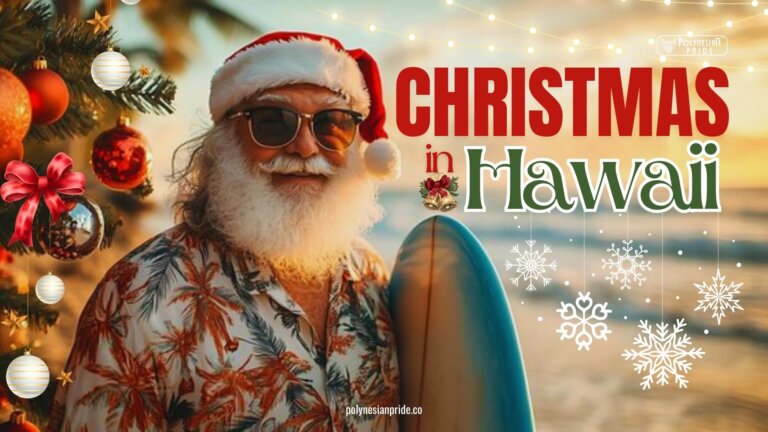May Day Is Lei Day in Hawaii: Celebrate Aloha Like a Local!

Yes, in Hawaii, May Day is celebrated as Lei Day.
But this isn’t just a fun excuse to wear flowers – it’s a cherished cultural tradition deeply rooted in the aloha spirit. From the vibrant colors to the symbolic flowers of each island, this day is a living celebration of Hawaiian heritage. In this blog, we’ll explore the history, meaning, and how May Day is Lei Day in Hawaii continues to bloom in hearts across the islands, and beyond.
How May Day Became Lei Day in Hawaii
The Origins of Lei Day
In the 1920s, poet laureate Don Blanding believed Hawaii needed a special day to honor the giving and receiving of lei, a powerful symbol of Aloha.
While working at the Honolulu Star-Bulletin, he shared his idea with columnist Grace Tower Warren, who came up with the iconic phrase: “May Day is Lei Day”.
Their vision inspired musicians Leonard “Red” and Ruth Hawk, who composed the now-famous song “May Day is Lei Day in Hawaii”. This anthem still echoes at every celebration across the islands today.

From Honolulu to Statewide Holiday
The first Lei Day was celebrated in 1928 at the Bank of Hawaii in downtown Honolulu, and it was so crowded it “taxed the capacity of the building”.
Miss Nina Bowman was crowned the first Lei Queen by Mayor Charles Arnold in that same year.
By 1929, Governor Wallace R. Farrington made it official: May 1st would be observed as “May Day is Lei Day in Hawai’i” by “all true friends of Hawai’i”.
From keiki to kūpuna, kamaʻāina to malihini, the celebration had become a cherished island-wide tradition and a beautiful reminder that May Day is Lei Day in Hawaii for everyone, everywhere.

The Cultural Significance of the Lei
For Native Hawaiians, the lei is far more than a beautiful garland — it is a profound symbol of Aloha, love, respect, and connection. Whether given in celebration, remembrance, or greeting, each lei carries meaning, often crafted with intention, care, and a sense of place.
Lei Day isn’t just a festive occasion; it’s a heartfelt tribute to this cultural symbol. It serves as a moment of pride and preservation—a time when the community comes together to honor the traditions, stories, and spirit that make the Hawaiian Islands unique. In every lie, there’s a story of people, of ʻāina (land), of Aloha.

Island Traditions & Lei Day Symbols
Each Hawaiian island has its own flower, color, and symbolic meaning, proudly represented during lei-making and festivities. These elements come to life during May Day is Lei Day in Hawaii, when each island’s identity is celebrated with pride, culture, and color.
Big Island
- Color: ʻUlaʻula (Red)
- Flower: Ohiʻa Lehua (Metrosideros polymorpha)
This fiery red flower grows from volcanic landscapes, symbolizing Pele – the goddess of fire. Its lei represents strength, resilience, and a deep connection to nature. Celebrations often include traditional hula and chanting performed near lava fields or historic sites.

Maui

- Color: ʻĀkala (Pink)
- Flower: Lokelani (Damask Rose)
Maui’s lokelani leis are fragrant and elegant, reflecting the island’s royal history and romantic spirit. Known for its soft petals, it’s a symbol of beauty and affection. During Lei Day, you’ll often see pāʻū riders and pink-hued pageantry in full bloom.
Oahu
- Color: Pala luhiehu (golden yellow) or melemele (yellow)
- Flower: ‘Ilima (Sida fallax)
The ʻilima lei, once reserved for aliʻi (chiefs), is delicate and time-consuming to make, often requiring hundreds of tiny blossoms. That’s why it’s called the Royal Lei. May Day is Lei Day in Hawaii reaches its peak on Oʻahu at Kapiʻolani Park, with the largest celebrations in the state.

Kauai

- Color: Poni (Purple)
- Flower: Mokihana (Berry)
This aromatic lei is made from the greenish-purple mokihana berries, known for their unique anise-like scent. Each berry must be carefully pierced and strung, making this lei both rare and meaningful. Kauaʻi’s parades highlight its deep-rooted connection to nature.
Molokai
- Color: ʻŌmaʻomaʻo (Green)
- Flower: Kukui (Aleurites moluccana)
Molokaʻi’s kukui lei is crafted from silver-green leaves and symbolizes enlightenment and protection. It’s also used for healing. This island’s Lei Day events tend to be more intimate and rooted in community and spirituality.

Lanai

- Color: Alani (Orange)
- Flower: Kaunaʻoa (Cuscuta sandwichiana)
The kaunaʻoa is a thin orange vine gathered and twisted to create a delicate lei. Though simple in appearance, it represents humility and connection to the land. On Lānaʻi, Lei Day is a quiet but heartfelt observance among locals.
Kahoolawe
- Color: Hinahina (Silvery Gray)
- Flower: Hinahina (Heliotropium anomalum)
The hinahina plant grows along sandy shores. Its silvery-grey tones reflect peace and reverence. Kahoʻolawe, once a military training ground, now honors Lei Day with a focus on cultural restoration and environmental healing.

Niihau

- Color: Keʻokeʻo (White)
- Symbol: Pūpū (Shell)
Niʻihau‘s lei is genuinely unique – it’s made from tiny white shells instead of flowers. Each shell must be pierced and strung with precision. This lei is a symbol of rarity and purity, much like the island itself, which remains largely untouched by modern development.
How do Hawaiians Celebrate Lei Day?
May Day is Lei Day in Hawaii, and it’s far more than just a date on the calendar. Across the islands, it blossoms into a joyful expression of tradition, creativity, and aloha. Here’s how this beloved celebration comes to life every May 1st:
Lei Day Parade in Honolulu
While Lei Day is celebrated across the Hawaiian Islands, one of the most iconic events happens right in the heart of O‘ahu — at Kapi‘olani Park in Honolulu (3840 Paki Ave).
- Date & Time: May 1, 2024, from 9:00 a.m. to 5:00 p.m.
- Admission: Free
- Getting There: Be prepared — traffic and parking can get intense. It’s highly recommended to walk, take public transportation, or take a taxi.

What to Expect:
This festival is a full-on celebration of Hawaiian culture, packed with aloha spirit.
- Live performances: by beloved local groups like Ho‘okena and the legendary Royal Hawaiian Band (the oldest municipal band in the U.S., dating back to 1836).
- The appearance of pāʻū riders: graceful horsewomen representing each Hawaiian island, dressed in flowing skirts and adorned with island-specific lei.
- Hula performances that honor tradition: expressive dances by skilled hālau hula, telling island stories through chant and movement.
- Island-style food and crafts: enjoy local eats, handmade lei, and authentic Hawaiian art from talented vendors.

Lei Competition
At the heart of Lei Day lies the cherished lei-making contest, where artistry meets tradition.
Skilled artisans and keiki alike craft leis from a wide variety of native flowers and materials, aiming to capture both beauty and meaning. Judging is based on:
- Flower and color accuracy per island (as set by 1923’s Joint Resolution).
- Traditional techniques (e.g. kui, wili, hilo).
- Creativity, symmetry, and craftsmanship.
Winning lei are proudly displayed and later honored at the Mauna ʻAla flower offering ceremony on May 2nd.

Lei Court Presentation
One of the most anticipated events of Lei Day in Hawaii is the crowning of the Lei Day Queen and her court. Each princess is adorned with her island’s symbolic color and flower and introduced in a formal presentation, often at Kapiʻolani Park in Honolulu.
This tradition:
- Honors Hawaiian aliʻi (royalty) heritage.
- Visually celebrates the unique identity of each island.
- Often includes pāʻū riders – women in flowing gowns on horseback, dressed by the island.
Cultural Performances
Lei Day wouldn’t be complete without the sound and movement of Hawaiian culture filling the air. All around the islands, you’ll find stages and schoolyards alive with:
- Hula performances (both traditional and modern styles).
- Live music by Hawaiian bands, from traditional music to modern music.
- Storytelling (moʻolelo) and Hawaiian chants (oli).
- Student showcases of mele and island history.
These performances aren’t just for entertainment; they’re acts of cultural preservation.
Lei-Making Demonstrations & Workshops
Whether at home or in community workshops, lei-making is a hands-on celebration of Aloha. In the weeks leading up to May Day, free or donation-based lei-making sessions pop up across:
- Community centers
- Cultural villages (e.g., Kulāiwi Village)
- Schools and libraries
Participants will be learned how to make a lei from:
- Hawaiian unique flowers like plumeria, ʻilima, and lokelani.
- Natural materials like tī leaves, kukui nuts, and shells.
- Lei making styles such as kui (piercing), wili (wrapping), and hilo (twisting).

Even at home, many Hawaiians make leis for family and friends — a true expression of aloha shared on May Day is Lei Day in Hawaii.
Mauna ʻAla Flower Offering (May 2nd)
The day after Lei Day, the celebration turns reflective. Mauna ʻAla – the Royal Mausoleum in Nuʻuanu becomes the site of a solemn tradition:
- Winning lei from the competitions are offered at the tombs of Hawaii’s aliʻi.
- It’s a moment of reverence, a way of remembering those who came before and grounding the celebration in ancestral respect.

From lei contests to royal courts, from hula to homemade leis, May Day is Lei Day in Hawaii is a celebration where culture is not just performed — it’s lived.
Tips for Visitors on Lei Day
Planning to visit Hawaii during May Day is Lei Day in Hawaii? Excellent choice — it’s one of the most vibrant and culturally rich times of the year. To help you make the most of your experience, here are a few tips to keep in mind:
1. Book Early (Really Early)
May Day is Lei Day in Hawaii, but the celebrations and workshops often start during the last week of April. Hotels, especially in Waikīkī (Oʻahu), near event hubs like Kapiʻolani Park, fill up quickly.
To secure the best spots, book your accommodation and car rentals 2–3 months in advance.
2. Know the Main Event Locations
- Oʻahu: Kapiʻolani Park in Honolulu hosts the largest Lei Day celebration in the state.
- Maui & Kauaʻi: Expect smaller-scale community events with cultural flair and pāʻū parades.
- Big Island: Hoʻokena and local schools feature mele and lei-themed presentations rooted in tradition.
For up-to-date details on times, performances, and nearby activities, be sure to check local tourism websites or community event calendars.

3. Dress for the Occasion (and the Weather)
May in Hawaii is sunny and vibrant, so remember to wear breathable, floral-friendly clothing, and remember to:
- Pack a pāpale (woven hat).
- Use reef-safe sunscreen.
- Carry a refillable bottle to stay hydrated.
And don’t forget your lei! Just one cultural note: never refuse a lei, and if you need to remove it, do so discreetly.
4. Respect the Lei and the Culture
May Day is Lei Day in Hawaii, and it’s not just a celebration but a living expression of Hawaiian values.
Show respect by:
- Listening quietly during hula and mele performances.
- Avoid flash photography during formal ceremonies.
- Asking questions at cultural booths – learning is part of the experience.
Let Aloha be your guide throughout the day!

5. Take Photos (But Ask First)
Hawaii is Instagrammable, no doubt – but on Lei Day, be courteous. If someone is performing or wearing a handcrafted lei, ask before snapping a close-up. Most people will say yes and appreciate your respect.
6. Support Local
From lei makers to craft vendors, Lei Day brings together incredible local talent.
- Buy souvenirs and art products from local stands.
- Tip performers or show appreciation when you enjoy a performance.
- Tag artists and crafters in your social posts to boost their visibility.
- It’s a great way to say mahalo and give back to the community.
Read more: 13+ Phrases in Hawaiian Greetings You Must Know Before Visiting Hawaii

With these tips, you won’t just attend May Day is Lei Day in Hawaii – you’ll experience it like a local.
Let the Aloha Bloom
As the sun sets on May 1st, the fragrance of leis lingers in the air, symbolizing the enduring spirit of Aloha. May Day is Lei Day in Hawaii – a celebration that transcends time, bringing people together in a shared embrace of culture, history, and love. So, whether you’re on the islands or elsewhere, join us in honoring this beautiful tradition. Wear a lei, share a smile, and let the aloha spirit guide you!
FAQs About May Day is Lei Day in Hawaii
1. Why is May Day called Lei Day in Hawaii?
In Hawaii, May 1st was chosen as Lei Day to honor the traditional practice of giving and receiving lei. The holiday was established in 1928 to celebrate Aloha through lei-making, dance, music, and culture, turning May Day into a uniquely Hawaiian expression of heritage.
2. What is Hawaiian Lei Day all about?
May Day is Lei Day in Hawaii, a statewide celebration held every May 1st. It focuses on Hawaiian culture through lei contests, hula performances, the crowning of a Lei Day Queen, and island-themed festivities that highlight each island’s symbolic flower and color.
3. What is the May 1st celebration in Hawaii?
May 1st in Hawaii is celebrated as Lei Day, a joyful tribute to Aloha and Hawaiian identity. It’s filled with traditional music, dance, lei-making, and parades. Locals wear or give lei as a symbol of love, respect, and community.
4. What does May Day mean in Hawaii?
In Hawaii, May Day isn’t just about welcoming spring — it’s a cultural celebration deeply rooted in tradition. May Day is Lei Day in Hawaii means honoring relationships, showing Aloha, and preserving native customs through floral art and community connection.
5. What do you say on May Day in Hawaii?
The most common phrase you’ll hear is “May Day is Lei Day in Hawaii!” You can also greet others with “Happy Lei Day!” or say “Aloha!” while giving or receiving a lei, always with a smile and a warm heart.

I am Leilani Miller – I research focusing on Vanuatu – volcanic landscapes, blue holes, coral reefs & rainforests. I have over five years of experience researching and sharing insights on tourism and environmental activism. Explore and experience without limits through my latest article.
Contact information:
Email: [email protected]
Tel: +1 (808) 555-1528






